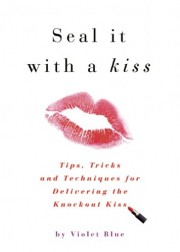Use the charts on this page to look up sex acts and see what risks they correspond with, and then to look up possible STDs/STIs you may have been exposed to so you know what to get tested for.
Mobile viewing: Apple device users can open the .PDF charts in Safari. Android users can view the embeds below as-is.
Direct .PDF links:
- By Sex Act: Safer Sex Risk Assessment Charts
- Infection Risk Assessment Chart
- Virus Risk Assessment Chart
Remember that this information is only for when you have 100% unprotected sex with a 100% infected partner. Use these tools to manage what you want to do, or what has already happened, in the least harmful way you can.
- High risk means that if the virus or infection is present, you will almost certainly get it.
- Moderate risk means that if the virus or infection is present you might get it.
- No risk means that if the virus or infection is present you are not at risk.
- N/A means that it is not possible to contract this virus or infection with this sex act.
If you think you might be at risk, use these simplified charts (CDC 2011 data) to understand what you might have been exposed to. Always and only consult a doctor for a diagnosis.
If you know your risks you can make an informed decision and give informed consent. We also make choices around informed consent. Consent is agreeing to behave in a particular behavior and having the ability to refuse. Informed consent is having a clear understanding of behavior and its potential consequences.
Lots of people have unprotected sex. Know the facts so you can make the best choice for yourself each time you engage in a sex act. There will be a lot of factors with any sexual encounter you have: you can only make the best choice you can at the time that you make it. That decision is a risk assessment, and it’s never simple.
It’s called “safer” sex because it’s not 100% safe – for birth control or sexually transmitted disease (infections and viruses). Know what you’re at risk for before you decide to take a risk, any risk, whether it’s to use a condom, latex gloves, barriers like dental dams, or go bare.
- Use condoms for penetration with penis or sex toys.
- Use latex or non-latex gloves for your hands.
- Use dental dams or saran wrap for surface barriers.
- Use water based lubricant on latex to keep it from drying out.
- Oil (even from hand lotion or food) will cause latex to weaken and break.
- Always change barriers for different partners or orifices. It is possible to spread something on an unprotected, shared sex toy.
- Lambskin condoms are not as safe as latex or nitrile condoms.
Friends often ask me for my personal recommendations on condoms. I say, find a brand that fits, and stick with it. When I worked in a sex toy store we sold individual condoms and I discovered that the condom of choice for sex workers is Crown Skinless Skin (just changed name to “Crown”) because they are clear, thin and strong. They are still my #1 choice and general purpose favorite.
However, I found in talking to customers over the counter for many years that many men feel more comfortable in condoms that have wider tips – it’s more pleasurable for sex and does not feel uncomfortable for guys who ejaculate more than a thimble. Most men who use condoms like Pleasure Plus, Twisted Pleasure, and Inspiral never go back to standard condoms. These condoms with a “pouch” were also the top choice for uncircumcised men, who would not buy any other kind of condom. If the guy puts a drop of lube in the inside tip before rolling it on, they feel amazing on the receiving end.
I got to be an early user for Lifestyles non-latex Skyn condoms, and they are fantastic, highly recommended if you don’t like or can’t use latex.
Stay up to date by visiting cdc.org and sfsi.org for supplemental information on toys and alt sex acts. Compiled by Violet Blue ® 1998-2011.





